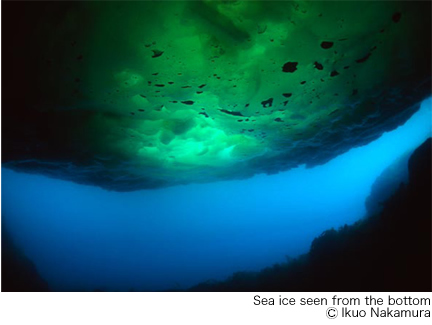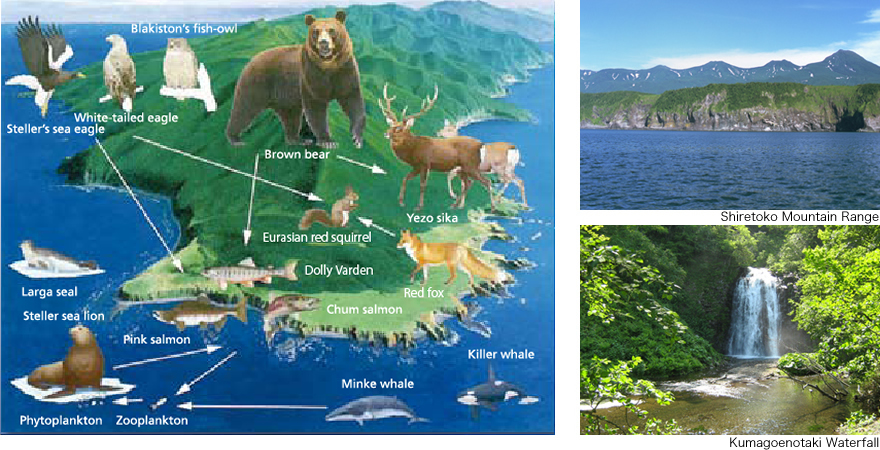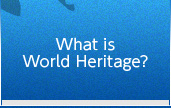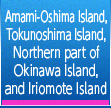- Ministry of the Environment>Nature & Parks>
- World Natural Heritage in Japan>
- Shiretoko>
- Outstanding Universal Value
Outstanding Universal Value

- Productive interaction between terrestrial and marine ecosystems with unique sea ice characteristics

- Important area for maintaining the biodiversity due to the fact that northern and southern species coexist, and as a result a wide range of fauna and flora that include many rare and endemic species live here
The Sea Ice Sustains an Abundance of Life
The coastal areas of Shiretoko in the Sea of Okhotsk are located
in the lowest latitude in the world where sea ice can form. The formation
of sea ice promotes upwards and downwards convection in
the ocean water by cooling the surface layer of ocean water, which
raises the nutritive salts that accumulate at the lower levels of the
sea up to the surface level. Once spring arrives, the surface layer is
bathed in enough sunlight for photosynthesis, and phytoplankton
proliferates explosively using nutritive salts. The vast quantities of
plankton produced in this way form the starting point for the food
chain that sustains the rich ecosystems of Shiretoko, linking the
ocean, rivers and forests.
The coastal areas of Shiretoko in the Sea of Okhotsk are located in the lowest latitude in the world where sea ice can form. The formation of sea ice promotes upwards and downwards convection in the ocean water by cooling the surface layer of ocean water, which raises the nutritive salts that accumulate at the lower levels of the sea up to the surface level. Once spring arrives, the surface layer is bathed in enough sunlight for photosynthesis, and phytoplankton proliferates explosively using nutritive salts. The vast quantities of plankton produced in this way form the starting point for the food chain that sustains the rich ecosystems of Shiretoko, linking the ocean, rivers and forests.

Life Supported by Integrated Ecosystems of Ocean, Rivers, and Forests
The ocean of Shiretoko fosters marine life such as plankton, fish, seabirds, dolphins and whales. Salmonids such as chum salmon and pink salmon swim upstream from the ocean and serve as an important food source for brown bears and birds of prey. Fish that remain partially uneaten also provide food for animals like foxes, before finally being returned to the soil where they provide nourishment for the forests. In this manner, a dynamic food web encompassing the ocean, rivers, and land has been formed in Shiretoko. Moreover, at Shiretoko, northern and southern species coexist and intimately interact one another to form a rich ecosystem. It is also a crucial habitat for the survival of globally endangered birds, such as Blakiston's fish-owls, Steller's sea eagles, and white-tailed eagles.

The ocean of Shiretoko fosters marine life such as plankton, fish, seabirds, dolphins and whales. Salmonids such as chum salmon and pink salmon swim upstream from the ocean and serve as an important food source for brown bears and birds of prey. Fish that remain partially uneaten also provide food for animals like foxes, before finally being returned to the soil where they provide nourishment for the forests. In this manner, a dynamic food web encompassing the ocean, rivers, and land has been formed in Shiretoko. Moreover, at Shiretoko, northern and southern species coexist and intimately interact one another to form a rich ecosystem. It is also a crucial habitat for the survival of globally endangered birds, such as Blakiston's fish-owls, Steller's sea eagles, and white-tailed eagles.







